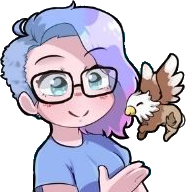
For the on-demand version, what I’m doing is looking at each of the various ways I’ve seen stories develop and doing a section on each, looking at what it is, what it gives you to help with fleshing out the story, possible trouble spots, some ways to proceed with it, and then two or three exercises to refine skills with that, each with a basic and then an overachiever version, a model I used with the Description and Delivering Information class. There’s twenty-three sections altogether, but here’s the section on starting with a plot, minus the exercises.
What It Is:
Some stories begin with a plot. This is a complete story: you know the problem, some basics of the characters and what will happen. Perhaps it’s something you’ve generated or taken from elsewhere. Perhaps it arrives pre-made in your head (and you should glory in it when it does, in my opinion), so all you need to do is sit down at the keyboard and write it out.
If you can describe in a few sentences what will happen in a story, you know the plot. For example:
- A little girl takes cookies to her grandmother and encounters a wolf along the way. When she gets to her grandmother’s house, the wolf is waiting to attack. A nearby woodsman comes and kills the wolf. (Little Red Riding Hood)
- A man steals the defense plan for a planet that is immensely wealthy. When he tries to use it, he finds out that the defense is constructed out of (because this is a spoiler of an excellent story, you should go read it) and meets a terrible fate. (Mother Hitton’s Littul Kittons, by Cordwainer Smith)
What it gives you:
You know the overall flow of the action: this happens so this happens so this happens and then it ends this way. You know the basic story pattern: that tension increases until the climax, and then rapidly falls. You know the source of the tension and usually the basic conflict: how the wants of two or more entities are collide in some fashion.
You have some sense of where it begins and a stronger sense of where it ends (although the reverse is not impossible).”‹ Connie Willis says to begin at the moment when the problem becomes a crisis. I don’t know that I agree that you should always do that, but it’s certainly better, in terms of story tension, to start with a moment where the problem is already taking place than to start with an idyllic landscape that slowly goes bad.
You may or may not know the characters involved, but you have some broad basics, and know some of the things about the character that affect it most for you, which will probably include gender and approximate age.
Similarly you have some broad basics of the setting, the overall world of the story, although you may need to think of specifics pertaining to scene locations.
More importantly, often you have an impalpable feel for the story, a sense of the overall tone and emotion that will help you shape the words as you write. To make the most of that, spend a couple of moments thinking about the atmosphere of the story. What movies or books might you compare it to? What is the overall emotion, both yours in writing it and what you want readers to take away?
What you need to think about:
What do you bring to the story that makes it unique? There are only so many plots (opinions of the actual number differ, with some saying seven, others numbers like 3 or 36, but the fact of the matter is that at a certain level you will not be able to do anything genuinely new unless you are more of a genius than I, and so you should look at what you bring to the table: the unique details of your life and experiences, your emotions and understandings, and your sensibilities. What instances of this plot have you witnessed being played out in your own life, perhaps as actor, perhaps as audience, and what of that experience can you draw upon?
Specifics of the action may be lacking in your broad overview, in which case you will need to flesh them out. Your burglar steals something – what? Who owns it and what defenses against thieves do they have? Your bounty hunter is chasing her prey, but what crime has that prey committed? Specifics of the location are something that you may well need to flesh out, in which case try to think of aspects that are particularly engaging and use those as interesting backgrounds to add interest to a scene: make that important conversation take place while the two are racing on ice skates through a city’s lower levels or at a party whose main entertainment are levitating performers who are half-dragon, half-human. What can you use?
Things to watch out for:
Sometimes when you go to put these stories down on paper, they are not the well-fleshed entities we hoped, but incomplete things, hints of lines that don’t tell us the entire picture, whispers instead of words, a sense of brushing up against one side of the story in the dark rather than holding it in its entirety. In such cases, I usually build a mind-map, writing down the details that I know and expanding from that. I’ll build on how to do that in the next section, Possible Next Steps.
Be careful of the generic. We all have a set of flimsy and unconvincing stage sets in our heads that, when examined with care, can probably be traced back to specific television shows or movies. My desert island will always have Gilligan lurking in the underbrush, for example, and any Victorian London scenes have to be forcibly wrenched out of the black and white of the old Basil Rathbone Sherlock Holmes movies.
Possible next steps:
Take your two or three sentence description and expand on it, stretching it to five hundred words by expanding on generic details with specifics and figuring out the overall timeline.
Write out list of scenes then develop the basics of what happens in each scene: they go to the movies, see a clue in the opening, and try to rush out of the theater only to find a bunch of lamias in the parking lot ready to brawl; they fight with the lamias and defeat them by throwing soap bombs at them, but Ellen’s arm gets broken in the process. You will probably tell it in chronological order, but it’s not too early to think about mixing it up if you think it would accomplish something in the story, like provide additional pleasure for the reader by allowing them to assemble the pieces of the puzzle.
Curious about this class?







4 Responses
@Catrambo I need this class so bad!!! Like a 5 week course on doing this!!!
RT @Catrambo: Class Excerpt: On Creating a Story When You Have the Plot: https://t.co/ilSRR5zCox
Gotten some good time in on this class today, 3k words so far. https://t.co/rUMutHUAI2
RT @Catrambo: Gotten some good time in on this class today, 3k words so far. https://t.co/rUMutHUAI2